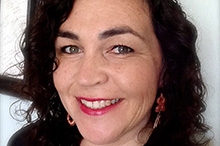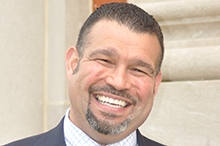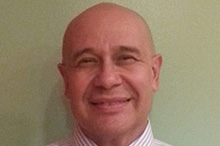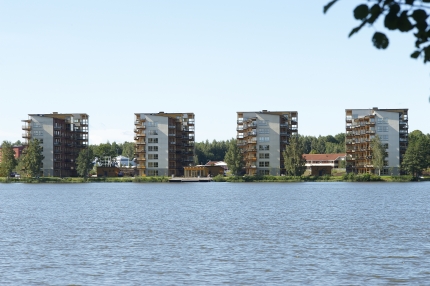Latest News
Here’s How Latino Millennials Are Shaping the New American Economy
Posted by on October 10, 2014 at 5:21 PM EDTMillennials are the largest, most diverse generation in the United States. That’s a fact from this week's report from the Council on Economic Advisers on the extraordinary progress our young people are making in this country. Latino millennials have contributed to this advancement significantly, and they will likely make up the majority of young people in the coming years.
Latino youth have already made important gains. The Hispanic high school dropout rate has been cut by more than half from 28% in 2000 to less than 13% in 2012, and more young people as a whole, especially women, are earning college degrees than ever before. The number of Hispanic students enrolled in college jumped by 45 percent from 2008 to 2012, with over a million Hispanic students enrolled today. The Hispanic unemployment rate has dropped, and poverty rates have dropped significantly for the first time since 2006.
It will only get better from here.
Millennials are more likely to have healthcare today without being job-locked, thanks to the Affordable Care Act. Thanks to the Affordable Care Act, the number of Latinos with insurance coverage has surged. College student Jennifer Molina said, when she got coverage for the first time, “This is particularly important to the well-being of my friends and family, because Hispanic-Americans are more likely to be uninsured than any other racial or ethnic group.”
Today’s report highlights President Obama’s visit with entrepreneurs, technologists and other creative innovators in Los Angeles – young people who are shaping the new American economy. Millennials have come a long way since the Great Recession and are now more diverse and educated than any other generation.
Although young people still face new challenges, the President is confident we can tackle these headwinds together as a country. This progress starts with basic steps. Let’s raise the minimum wage to help young people transitioning into the workforce. Around a quarter of those would benefit from legislation that would raise the wage to $10.10 are Hispanic.
We also need to help alleviate student loan debt, the burden saddling too many millennials just graduating from school. Let’s expand educational opportunities, especially for young Latinos, so that they have the tools to succeed and empower their communities. To work towards that goal, President Obama recently launched the My Brother’s Keeper Community Challenge, an effort to encourage local communities to implement a coherent cradle-to-college and career strategy aimed at improving life outcomes for all young people.
But ultimately, the promise of America’s future and strong middle class rests in the hopes and dreams of our young people. Latino youth exemplify that promise – if you work hard and play by the rules, you should have the opportunity to succeed no matter the circumstances of your birth.
Check out the findings from this week's report in this infographic (featuring Millennial-friendly emoji), and pass it on. And to read more about the President’s accomplishments for the Hispanic community, click HERE.
Katherine Vargas serves as the Director of Hispanic Media at the White House.
Learn more aboutExpanding Opportunity for All
Posted by on October 10, 2014 at 4:47 PM EDTThis blog post was cross-posted on EFE, and you can read the original article HERE.
Hispanic Heritage Month is the perfect time to reflect on the extraordinary contribution that the Latino workforce makes to our nation’s economic vitality. This is also a time to remember that as a nation, we need to ensure that all hardworking people are able to get ahead and reach for the American dream.
It used to be that you could support a family on a minimum-wage salary. Today, a minimum-wage worker has to make a choice every day: Buy a gallon of milk for the kids, or buy a gallon of gas to get to work. That is why it’s time to raise the minimum wage.
Today, Latinos account for around a quarter of current minimum wage workers, despite only representing around 16% of all workers. Raising the minimum wage to $10.10 per hour would make a difference in the lives of around 28 million workers — roughly one quarter of the workers who would benefit from that raise are Latinos.
President Obama continues to call on Congress to increase the national minimum wage, but they have continuously failed to act. Fortunately, people around the country aren't waiting. A national movement is inspiring states, local governments and forward-looking businesses to show leadership where Congress hasn't.
Thirteen states plus the District of Columbia have passed new laws increasing their minimum wages over the last year and a half. More than 7 million workers will benefit from those increases.
A higher minimum wage is pro-business as well as pro-worker. Employers have embraced a higher minimum wage and acted on their own to raise their employees' pay. From national brands such as Costco and the Gap, to the Ace Hardware store just a mile away from my office, companies are giving their workers a raise not just because it's the right thing to do but also the smart thing to do for the bottom line. It improves morale, productivity and customer service; it reduces absenteeism, turnover and training costs.
Many employers believe that the people who make or sell their products ought to make enough money to buy them. In an economy driven by consumer demand, what any business needs most are customers. When working families have more money in their pockets, they pump it right back into the economy. They spend it on goods and services in their communities — and that helps businesses grow, which creates more jobs.
In addition to asking Congress to act, the President is doing what he can to help more workers get a raise. He signed an executive order, which we at the Labor Department are in the process of implementing, to increase the minimum wage to $10.10 per hour for private-sector workers on federal contracts. It's hard to argue against this idea: If you serve meals to our troops for a living, you shouldn't have to struggle to make ends meet in order to serve a meal to your family at home.
As we celebrate Hispanic Heritage Month, let us honor the important contributions of Latino workers to this nation’s economic vitality by recommitting ourselves to expanding opportunity for Latinos.
Learn more aboutAnnouncing the U.S. Tall Wood Building Prize Competition to Innovate Building Construction
Posted by on October 10, 2014 at 10:46 AM EDTAs part of the Obama administration's commitment to mitigate climate change, USDA, in partnership with the Softwood Lumber Board and the Binational Softwood Lumber Council, is announcing the U.S. Tall Wood Building Prize Competition. This competitive prize, open to teams of architects, engineers, and developers, will showcase the architectural and commercial viability of advanced wood products like Cross Laminated Timber (CLT) in tall buildings.
Advanced wood products are becoming the latest innovation in tall building construction. Products like CLT are flexible, strong, and fire resistant. In construction, wood products can be used as a successful and sustainable alternative to concrete, masonry, and steel. Using wood also reduces greenhouse gas emissions by storing carbon and simultaneously offsetting emissions from conventional building materials. By some estimates, the near term use of CLT and other emerging wood technologies in buildings 7-15 stories could have the same emissions control affect as taking more than 2 million cars off the road for one year.
Learn more about RuralRoots and Wings
Posted by on October 1, 2014 at 12:32 PM EDT
Patricia Cortez is being honored as a Latino Educator Champion of Change.
On my first day of kindergarten, my mother and I walked to my classroom hand-in- hand and eagerly awaited our turn to meet the teacher. When we finally approached her, she gave us a warm smile and greeted us with words that were familiar and comforting. She spoke to us in Spanish, my first language and my mother’s only language. My parents had made the decision to place me in a bilingual classroom, not knowing that this decision would set the trajectory for my life’s work in the very same district.
It was 1976, and bilingual education was in its infancy in my school district. There were a small handful of teachers at this school who wanted to prove that bilingual educate could work. And I am grateful that these extraordinary teachers helped me develop my Spanish language skills, enabling me to nurture my cultural bonds with my parents and other relatives. The ability to communicate fully with them, I now realize, was a gift that kept me grounded in and connected to my cultural values and to my heritage.
I am proud to teach at a school where the expectation is that ALL students in our bilingual immersion program will be fully bilingual and biliterate. In addition to being a teacher, for the last five years, I have also served as the school’s resource teacher, facilitating curriculum development. However, it’s not just about the language. Students are also taught a sense of pride, understanding, and respect for their culture and for other cultures. Their ability to speak multiple languages connects them to the world. What an honor it has been to teach and support my students on this journey.
I often think of that fateful first day of school—and how the encounter with my first teacher inspired a feeling of trust that served as a foundation for what I do as a teacher almost 40 years later. My hope is to inspire my students to pursue their dreams and to always remember and honor their families and community so that they in turn may serve as an inspiration for future generations.
Patricia Cortez Hidalgo is a first grade teacher at Alianza Charter School in California.
Learn more about EducationCommunity Colleges: The Secret Sauce
Posted by on September 30, 2014 at 6:14 PM EDTEd. note: This is cross-posted on the U.S. Department of Labor blog. See the original post here.
Motlow State Community College in Tennessee is working with Bridgestone Tire Company and other employers to expand their mechatronics program, creating a training facility on-site at Bridgestone to prepare students to move quickly into high-skill jobs.
Estrella Mountain Community College is leading a consortium of five Arizona colleges to develop the workforce and talent pipeline required by the region’s energy and mining industries.
Bellevue College in Washington state, together with eight other schools, is launching a program to train veterans and their eligible spouses in the high-demand, high-wage field of health information technology.
All three of these efforts – and many more – are the result of a bold, unprecedented investment the Obama administration has made to expand job-driven training at community colleges nationwide.
The program is called TAACCCT -- that stands for Trade Adjustment Assistance Community College and Career Training. As acronyms go, I’m not going to say it’s our very best work. But as a commitment to building a 21st century workforce, as a tool to prepare people for the jobs of today and tomorrow, it is second-to-none.
Today, I joined Vice President Biden at the White House for the announcement of the fourth round of TAACCCT grants -- 71 of them in all, worth a total of more than $450 million. That comes on top of the nearly $1.5 billion awarded in the first three rounds. With today’s announcement, roughly 700 colleges nationwide have received TAACCCT funding since 2011.
I’ve seen these grants and the programs they support in action. I saw it last year with Dr. Jill Biden when we traveled to a community college in North Carolina to tour their state-of-the-art program in critical infrastructure. The same day we hopped down to South Florida where another TAACCCT grantee has a top-notch aviation institute.
Most importantly, these grants change lives. Joining us at the White House today was Gary Pollard, a former Army medic who is starting a $60,000-a-year job thanks to cyber technology instruction he received through TAACCCT-supported programs at Anne Arundel Community College (AACC) in Maryland. Last year when I visited the college, I met both Gary and Ginny Quillen, a woman who’s faced considerable challenges in her life. Ginny was abused as a child; she was involved with drugs and served time. But through hard work and resilience, she’s overcome the adversity. And with the Information Assurance and Security certificate she earned at AACC, today she makes $52,000 a year in a job she loves and a field she’s passionate about.
No one receives a TAACCCT grant without putting industry partnerships front-and-center. The idea is to align curriculum with the needs of businesses – so ready-to-work Americans can move right into ready-to-be filled jobs. When employers go to hire graduates of these programs, they can have confidence in the relevance of the credential…because they helped design the credential.
What we’re doing is creating a foundation with a lasting impact. This is a Dwight Eisenhower moment -- TAACCCT is to our skills infrastructure what the interstate highway system was to our physical infrastructure. President Eisenhower took the long view some 60 years ago and invested in the building blocks that continue to power our economy to this day. And decades from now, our grandchildren will benefit from the on-ramps to college and the off-ramps to middle-class jobs that we’re constructing today.
Community colleges are incubators of innovation and opportunity. They are the secret sauce of workforce development, empowering communities, strengthening businesses and invigorating local economies. Today, we’re not just investing in new facilities, technologies or classroom tools; we’re investing in people’s highest and best dreams. And we’re investing not just in today’s needs, but in American prosperity for generations to come.
###
Progress in Action: Celebrating Hispanic Educational Achievement
Posted by on September 30, 2014 at 5:25 PM EDTThe following article was published on Univision.com. You can read the original article in Spanish HERE.
Each year, in honor of Hispanic Heritage Month we recognize and celebrate the rich histories and significant contributions made by Hispanics throughout this great nation. With over 54 million people, Hispanics are the largest, youngest, and fastest-growing minority group, and will represent 70 percent of our nation’s population growth between 2015 and 2060. From preschool to postsecondary education, Hispanic representation is palpable. Hispanics now make up the majority of students in our public schools, with 1 out of every 4 students in K-12 grades. Similarly, college enrollment is up more for Hispanics than any other group.
Earlier this year the President said that 2014 would be a “year of action”. In this spirit, the White House Initiative on Educational Excellence for Hispanics (Initiative) officially launched our “Anniversary Year of Action” - a call to action to expand upon the progress and achievement made in Hispanic education.
As a community, we have made significant progress. According to the Census Bureau (2011), the Hispanic high school dropout rate has been cut in half from 28 percent in 2000 to 14 percent in 2011.The Hispanic graduation rate has increased to 76 percent – an all-time high. College enrollment among Hispanics reached a record high and continues to increase. In 2012, the college enrollment rate among 18-to-24-year-old Hispanic high school graduates was over 49 percent, up from 31 percent in 2002.
We recognize there is more work to do and that it’s a shared responsibility—everyone will have a role to play in ensuring the continued success of our community. Over the coming year we will highlight “Bright Spots” that are providing a quality early childhood education, robust and rigorous K-12 education experiences, supporting increased participation in STEM courses, promoting promising practices, partnerships, and institutions of higher education that are graduating more Latinos ready and prepared to enter the competitive workforce, preparing more Hispanics into the teaching profession, while highlighting collaborative efforts supporting our young Hispanic girls and boys through the President’s initiative My Brother’s Keeper.
We will continue working towards the President’s 2020 goal of once again leading the world in college completion. Over the last 12 months, the Initiative has been deeply committed to amplifying the Administration’s education agenda, building partnerships and expanding commitments to support education for Hispanics, while also highlighting the Hispanic community’s progress. Through a number of activities – from national policy forums and back-to-school tours to webinars and twitter chats – we reached over 100,000 stakeholders around the United States and Puerto Rico. We heard from parents, students, non-profit, state and local government, business and philanthropy leaders, and educators about their work and challenges. Through strategic outreach and engagement, we learned that the Hispanic community is not only making great strides but eager to reframe the narrative.
We look forward to building on previous successes and producing more helpful tools like our “¡Gradúate! A Financial Aid Guide to Success”, published this May. The bilingual guide - designed to help students and families navigate the college enrollment and financial aid process includes key information about federal financial aid resources available and on scholarships supporting all Hispanic students, including those granted Deferred Action for Childhood Arrivals and non-U.S. citizens. We will continue to work towards increasing the number of Hispanic teachers through innovative strategies, such as our #LatinosTeach social media campaign launched this month.
And just this Monday, the White House, as part of Hispanic Heritage Month celebrations, honored Latino Educators “Champions of Change” who are doing extraordinary work to educate the next generation of Americans. These Champions have distinguished themselves by devoting their time and energy to creating opportunities for young people to succeed, particularly in low-income communities. The event showcased these leaders and the exceptional contributions to this country. Because, we know that by highlighting progress in action, we will ensure a bright future for the Hispanic community.
Investing in Our Children Through Urban Education
Posted by on September 26, 2014 at 12:19 PM EDT
Pedro A. Rivera is being honored as a Latino Educator Champion of Change.
Growing up in the Hunting Park section of North Philadelphia shaped me into the person I am today. Urban education has always been a part of my life. I was raised by a single teenage mother, and I am the only person in my family to attend and graduate from a post‐secondary institution. My passion for service started while attending Penn State University. While I was enrolled as an engineering major, I began tutoring at a local high school and figured out that I belonged in education. Little did I know at the time, this life-changing experience would lead me down such a rewarding path.
Upon graduating with a degree in education, I returned to my hometown to teach English Language Learners at Kensington High School and basic literacy to adults in the evenings. My passion became clear as I took great pride in changing the lives of kids and serving the greater community. After several roles in the classroom, union, and central office administration, I moved my family nearly 80 miles west to become the first Latino Superintendent of the Lancaster School District.
This new role provided me with an opportunity to advocate for change. While education is an ever‐evolving process, I was now able to lead the charge. After placing a large emphasis on high-quality instruction and hiring the best and the brightest teachers, positive results followed. Our graduation rates continue to rise, and our students have made steady gains in state assessment scores. We have also provided a nationally acclaimed music and arts program and received a recent recognition by the Washington Post as one of the top twenty high schools for academic rigor in Pennsylvania.
Nestled in the heart of Lancaster County in southeast Pennsylvania, the School District of Lancaster serves a diverse student body of 11,500 students, which educates approximately 1,000 homeless students during the course of a year. 17% of our students are learning English, and more than 38 languages are spoken throughout our buildings.
We know that we must remove barriers to success in order for our students to thrive. For the past several years, every student in our District has received free breakfast and lunch each school day. Through our community schools, students can receive eye glasses, dental care, and comprehensive medical services. Education is much more than teaching the core subjects. We must cater to the whole child to ensure we meet and exceed their individual needs.
I am deeply honored to receive the Latino Educator Champion of Change award. I continue to be humbled and inspired by the many professional team members I surround myself with each day. Together, all of us can strengthen America’s future by supporting the many students who fill our classrooms.
Pedro Rivera is the Superintendent of the School District of Lancaster and a doctoral student at the University of Pennsylvania.
Learn more about EducationServing the Underserved with Excellence
Posted by on September 26, 2014 at 12:15 PM EDT
Leonel Popol is being honored as a Latino Educator Champion of Change.
As a Bilingual School Counselor at Cardozo Education Campus in Washington, DC, I have hoped to create change that will last generations after I’m gone. I believe that the sign of a true educator is someone who creates impact that can exist long after the educator is gone.
I have worked with the English Language Learners student population at Cardozo since September of 1998. At the time, I knew that I wanted to serve and give back to my community. Cardozo provided me with the perfect opportunity. From the very beginning, I felt that every child was essential and a reflection of the divinity of the universe.
At Cardozo, I have counseled students who have achieved valedictorian and salutatorian status and have also witnessed students succumbing to gang violence. I have celebrated joyously with students who were awarded college scholarships and have watched others instead go to jail and lose their futures because of their poor decisions. To keep myself going, I have to take pride in the successes and use the failures as motivation to work even harder.
When I meet parents at Cardozo, I already know the shoes that many of them have walked through. I immigrated to this country 29 years ago and initially worked in construction and housekeeping. I have lived many of the challenges and hardships those parents and their families face every day. I want my students and the community to dream big and work hard to make those dreams come true. I think of students as the little seeds that have the potential to become mighty oak trees. Dreams do come true after all for those who dare to dream and have the determination to achieve great things.
Leonel Popol is a Bilingual Counselor at the Francis L. Cardozo Education Campus in Washington, DC. He is also the coach of Georgetown University’s women’s soccer team.
Learn more about Education
- &lsaquo previous
- …
- 19
- 20
- 21
- 22
- 23
- 24
- 25
- 26
- 27
- …
- next &rsaquo



Twitter